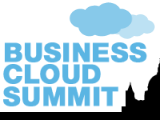Cloud Computing presents a massive opportunity to organisations, but those that fail to take into account the human role and need for training in Cloud deployment could fall at the first hurdle, warns Nucleus Research’s Rebecca Wettemann.
That was the message from Rebecca Wettemann, VP of research at Nucleus Research as she addressed the Business Cloud Summit in London, highlighting some of the secrets to sucessful preparation and deployment.
“The key to any software deployment is pitching effective adoption,” argued Wettemann. “Cloud Computing still requires those same efforts in the areas of training, development and deployment to be successful. Human adoption is just as important in a Cloud environment as it is with any other”.
Building the business case for Cloud Computing is not difficult, but requires a structured approach, suggested Wettemann, who emphasised the role that training can play in this.
The three main metrics used to measure the value of technology are return on investment, payback period and total cost of ownership (TCO). When investing in new technology the primary concern is ROI. While there have been four figure percentage returns from Cloud Computing projects in recent years, it shouldn’t be about the percentage of returns, argued Wettemann, it’s about a structured understanding of what you spend and what you get. Building the business case for Cloud Computing isn’t just about coming up with an ROI number, it’s about understanding and using that business case to maximise returns in the long-run.
- Take advantage of knowledge transfer
- Don’t skimp on training
- Make it a roadmap for successful development.
- Success checklist
- MOM – If you can’t explain it to your mother you shouldn’t be doing it
- Talk to references
- Get the roadmap
- Get an SLA with teeth
- Be a squeaky wheel – be very active in the process
- Include all costs – even the little ones
- Accelerated growth of Sis, internal developers
- Shortening sales cycle for ISVs
- Migration of traditional costly apps to the Cloud
- There’s an app for that: Developers will increasingly build multiple components and widgets and keep iterating
- No one will have two or three year application plans anymore
- SAP: There’s not an app for that – SAP is not going away but organisations will look to streamline costs in this area
- Contracts with teeth: Articulated service agreements will be more prevalent and they won’t just focus on security, but will also cover how companies can exit from such agreements.
Cloud Computing presents a massive opportunity to organisations, but those that fail to take into account the human role and need for training in Cloud deployment could fall at the first hurdle, warns Nucleus Research's Rebecca Wettemann.
That was the message from Rebecca Wettemann, VP of research at Nucleus Research as she addressed the Business Cloud Summit in London, highlighting some of the secrets to sucessful preparation and deployment.
“The key to any software deployment is pitching effective adoption,” argued Wettemann. “Cloud Computing still requires those same efforts in the areas of training, development and deployment to be successful. Human adoption is just as important in a Cloud environment as it is with any other”.
Building the business case for Cloud Computing is not difficult, but requires a structured approach, suggested Wettemann, who emphasised the role that training can play in this.
The three main metrics used to measure the value of technology are return on investment, payback period and total cost of ownership (TCO). When investing in new technology the primary concern is ROI. While there have been four figure percentage returns from Cloud Computing projects in recent years, it shouldn’t be about the percentage of returns, argued Wettemann, it’s about a structured understanding of what you spend and what you get. Building the business case for Cloud Computing isn’t just about coming up with an ROI number, it’s about understanding and using that business case to maximise returns in the long-run.
- Take advantage of knowledge transfer
- Don’t skimp on training
- Make it a roadmap for successful development.
- Success checklist
- MOM – If you can’t explain it to your mother you shouldn’t be doing it
- Talk to references
- Get the roadmap
- Get an SLA with teeth
- Be a squeaky wheel – be very active in the process
- Include all costs – even the little ones
- Accelerated growth of Sis, internal developers
- Shortening sales cycle for ISVs
- Migration of traditional costly apps to the Cloud
- There’s an app for that: Developers will increasingly build multiple components and widgets and keep iterating
- No one will have two or three year application plans anymore
- SAP: There’s not an app for that – SAP is not going away but organisations will look to streamline costs in this area
- Contracts with teeth: Articulated service agreements will be more prevalent and they won’t just focus on security, but will also cover how companies can exit from such agreements.







